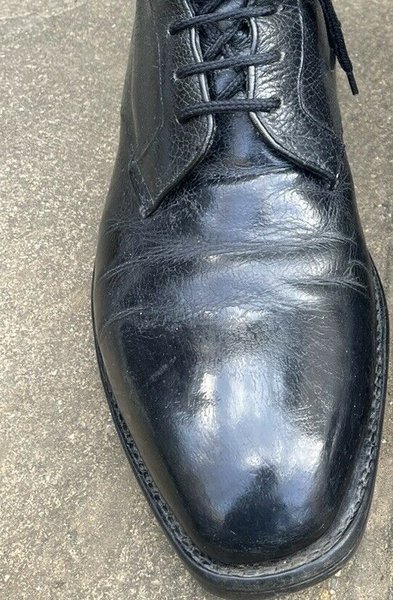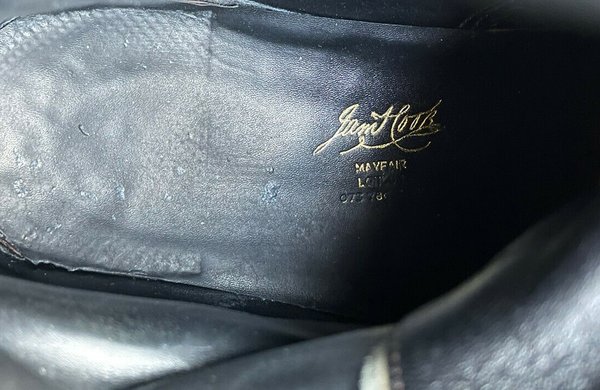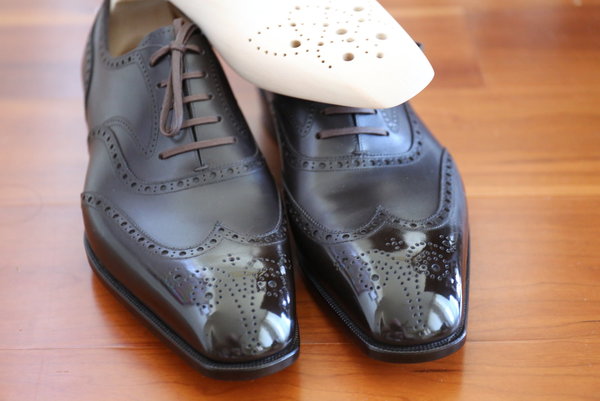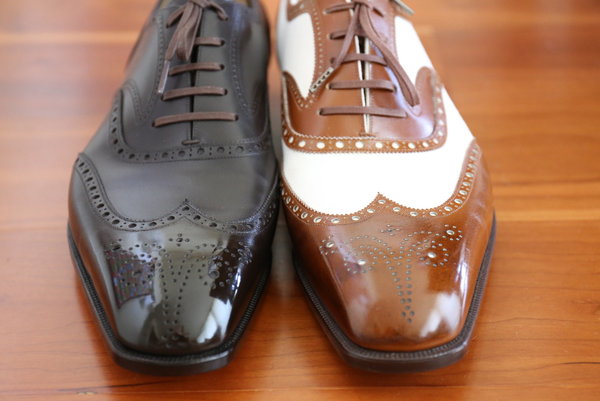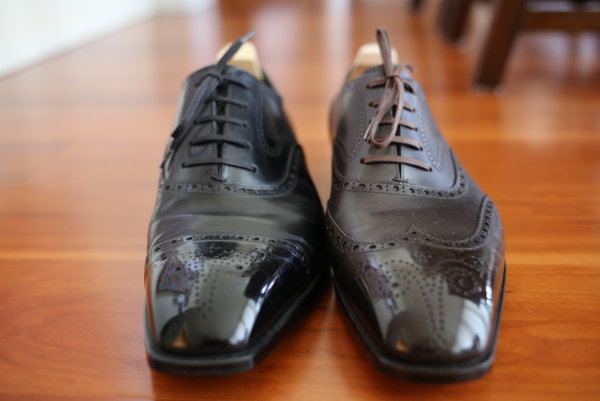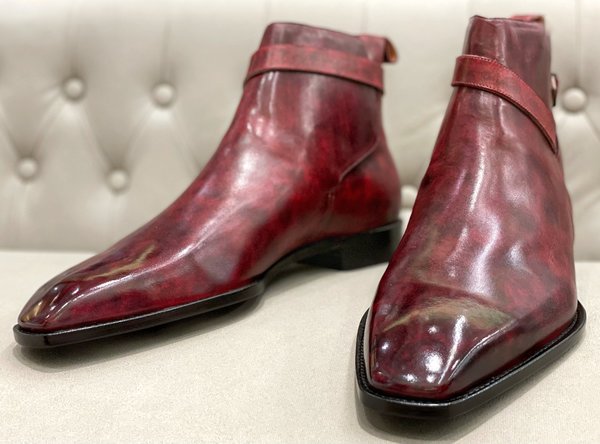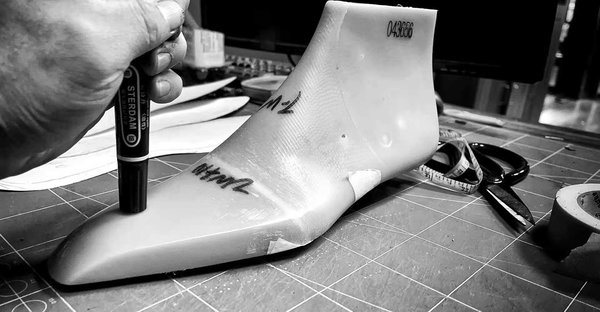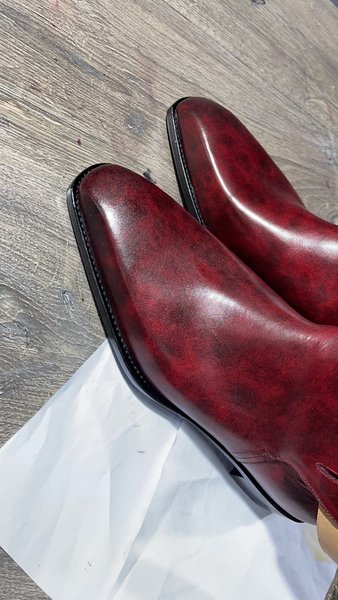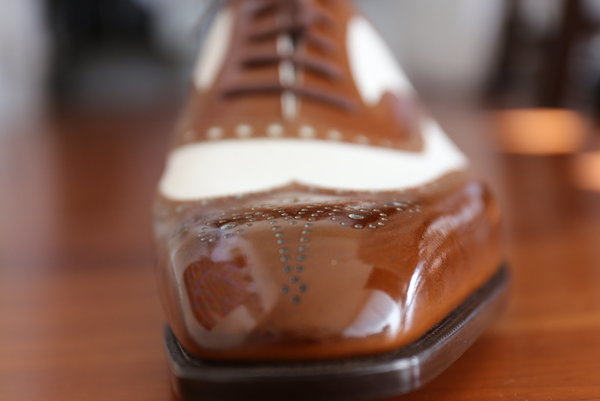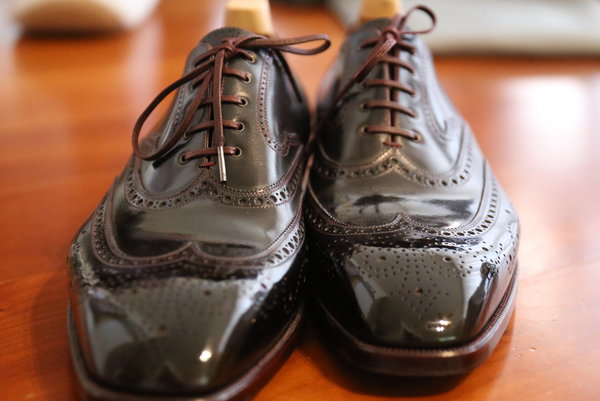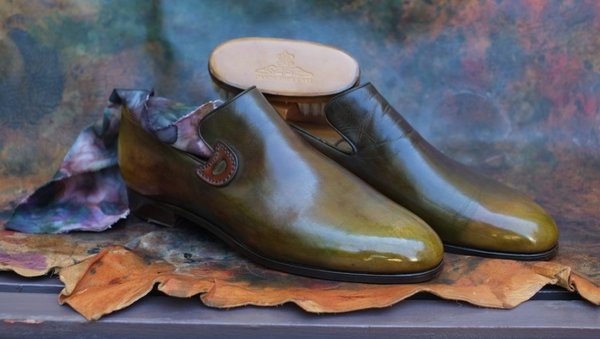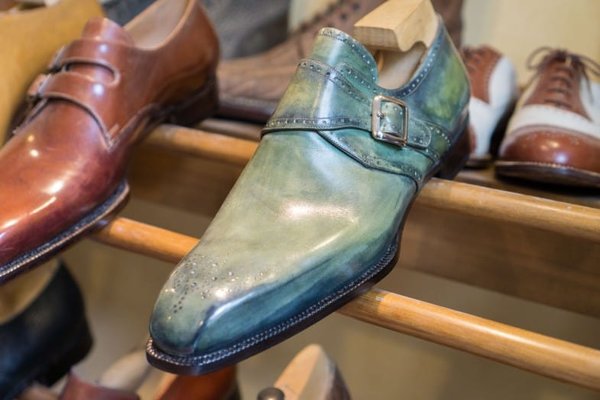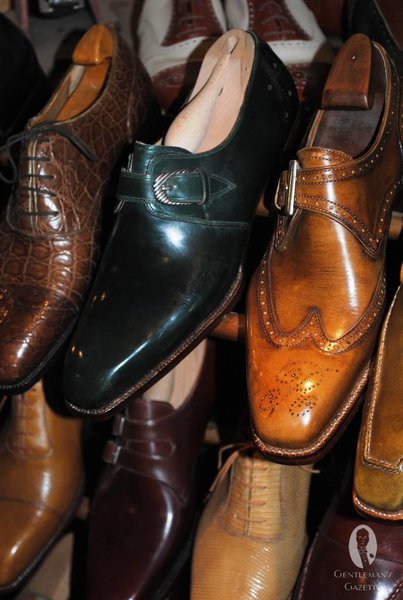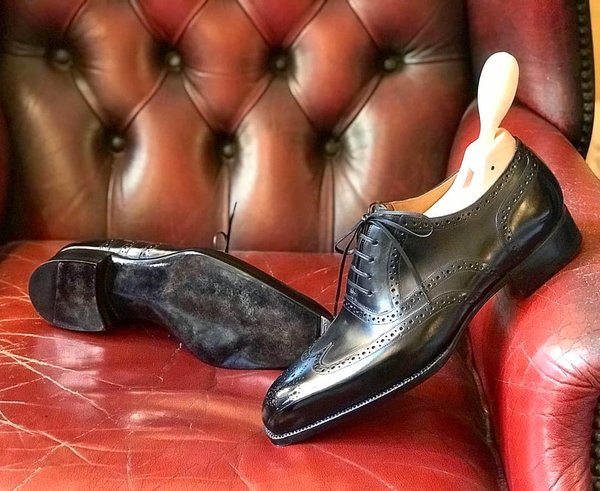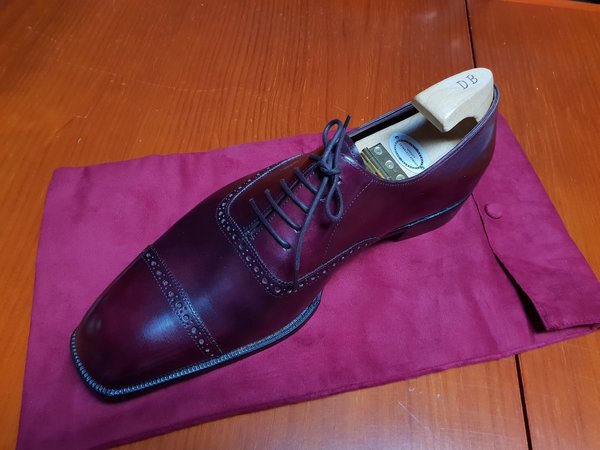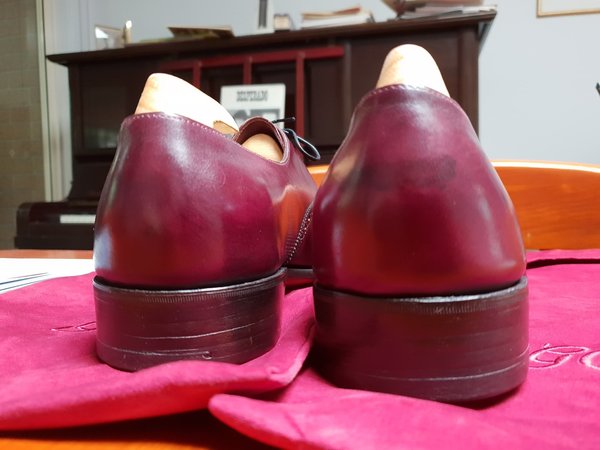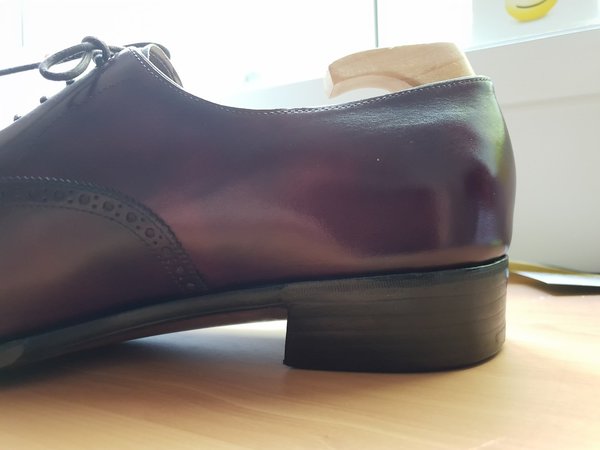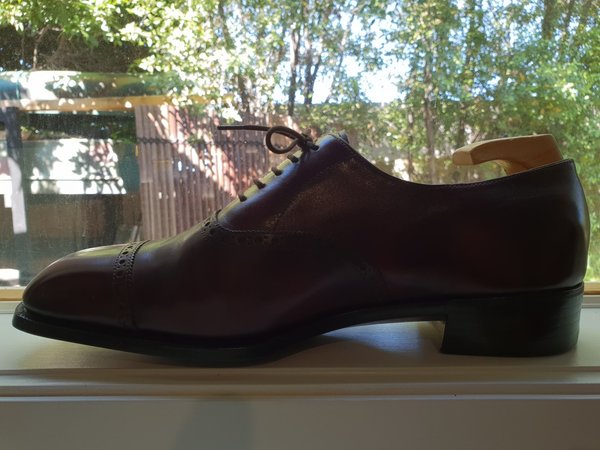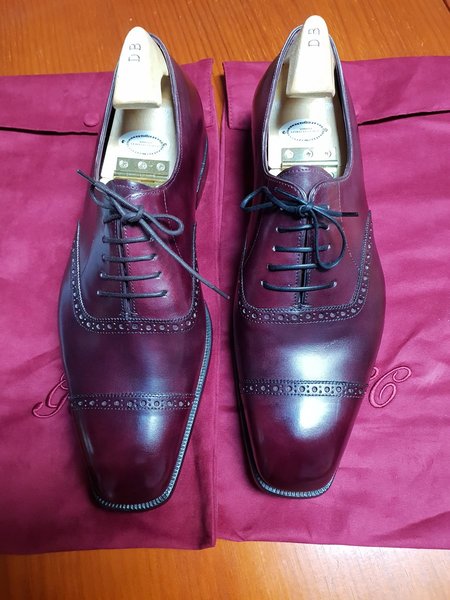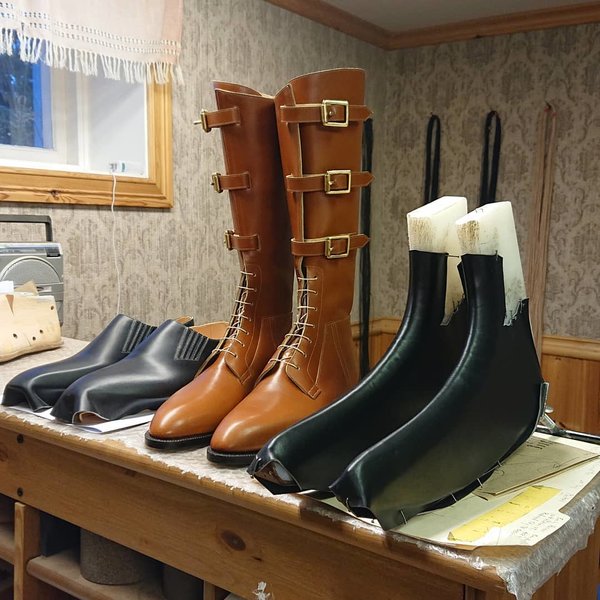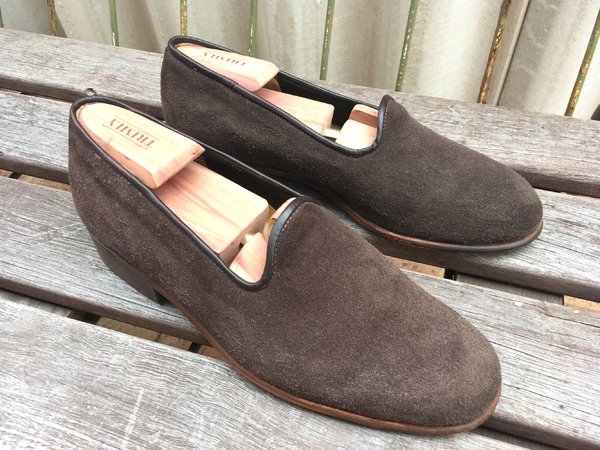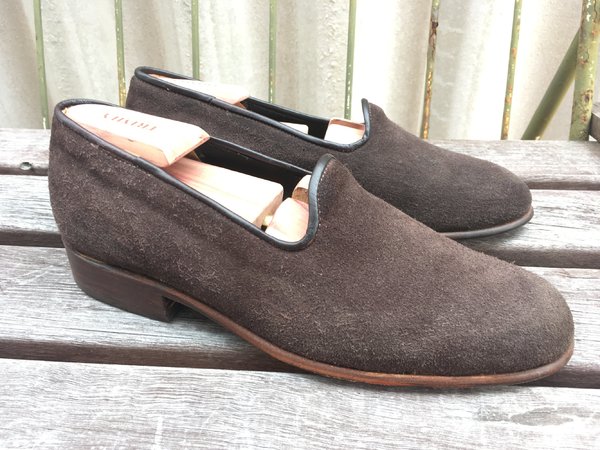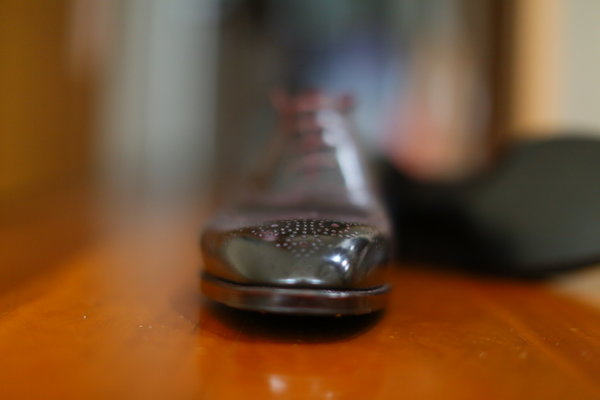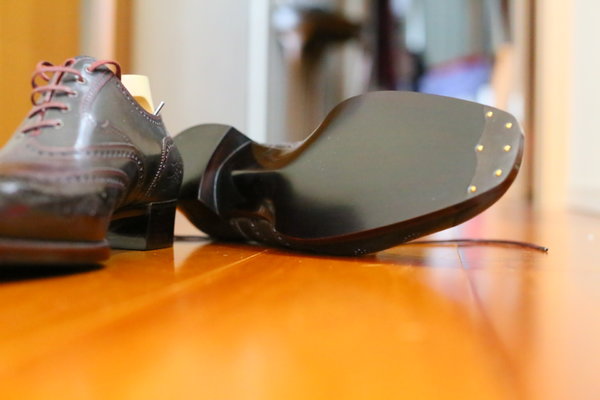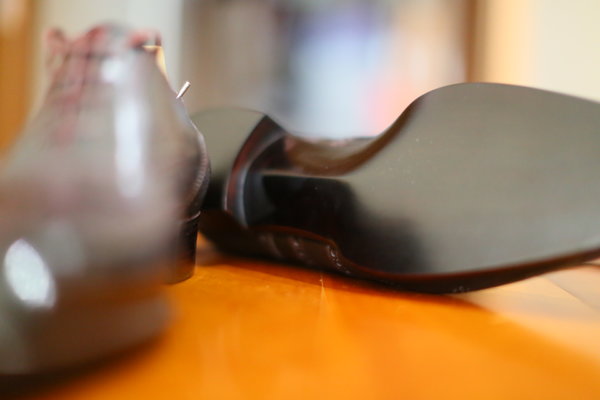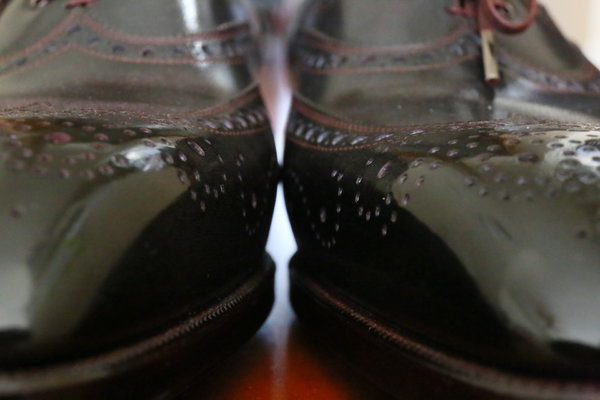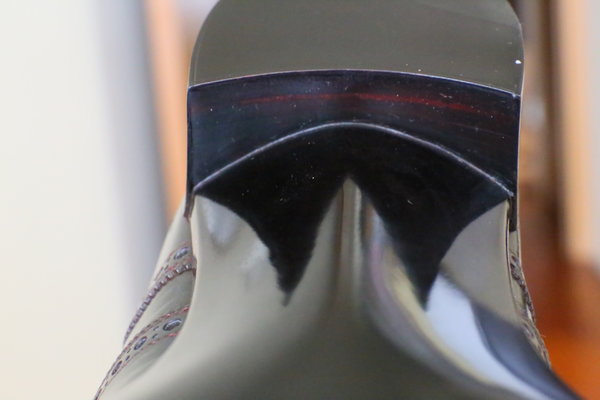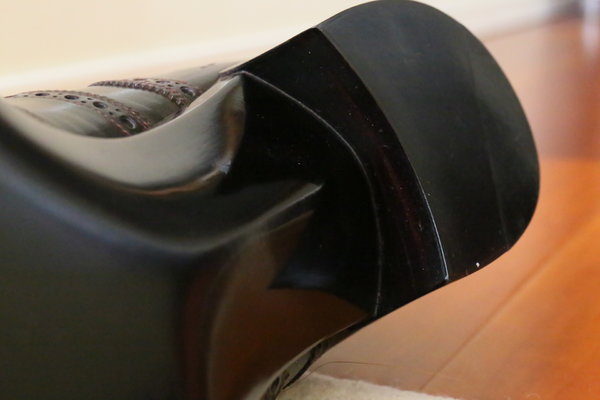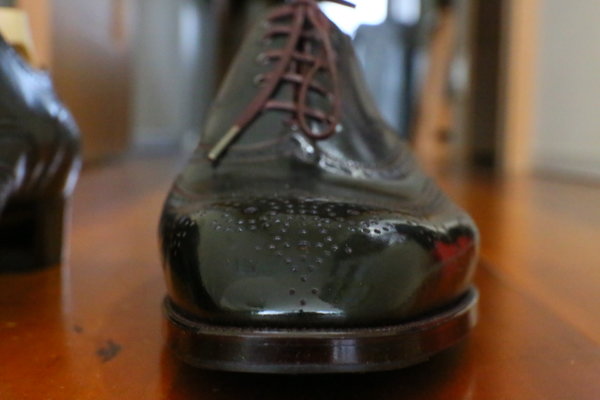- Joined
- Mar 23, 2002
- Messages
- 4,625
- Reaction score
- 1,285
Is that the method you are talking about?
[VIDEO][/VIDEO]
Now, that's a crude method if there ever was one.
Yes, you might be able to channel the outer sole; although somewhat tricky if you go for the usually very thin outsoles of 3 mm (1/8"). Nevertheless you have to poke all through the insole and come out with your stitching laying on top of the insole.
Apart from opanka construction, I believe that's the way they used to make peasant shoes in the Balkans.
But for pumps that are not turn-shoes the Traditional pump stitch is very much like a hand sewn Blake stitch. Such pumps (and the Traditional technique) are called "channel pumps."
Although we compare channel pump stitching to Blake, it was a far older technique and much much harder to do.
Is that the method you are talking about?
[VIDEO][/VIDEO]
Now, that's a crude method if there ever was one.
Yes, you might be able to channel the outer sole; although somewhat tricky if you go for the usually very thin outsoles of 3 mm (1/8"). Nevertheless you have to poke all through the insole and come out with your stitching laying on top of the insole.
Apart from opanka construction, I believe that's the way they used to make peasant shoes in the Balkans.




